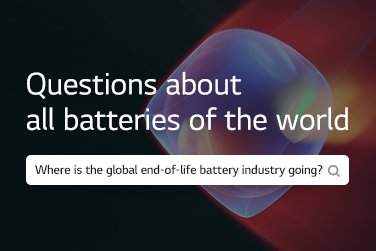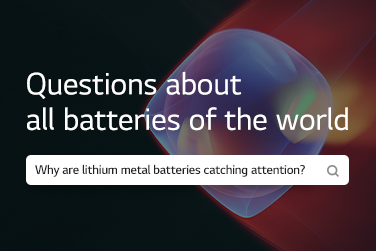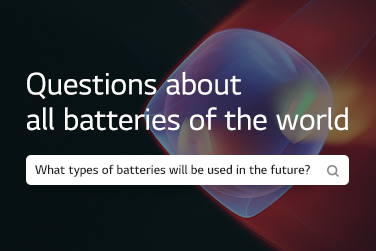The global market of end-of-life batteries is growing rapidly. Accordingly, many battery manufacturers are contemplating and striving to utilize end-of-life batteries to save resources and reduce environmental pollution.
End-of-life batteries from EVs can be utilized by either “reusing or “recycling” them.
Then, how are they different? In today’s “Questions about all batteries of the world,” we will learn about reusing and recycling of end-of-life batteries!
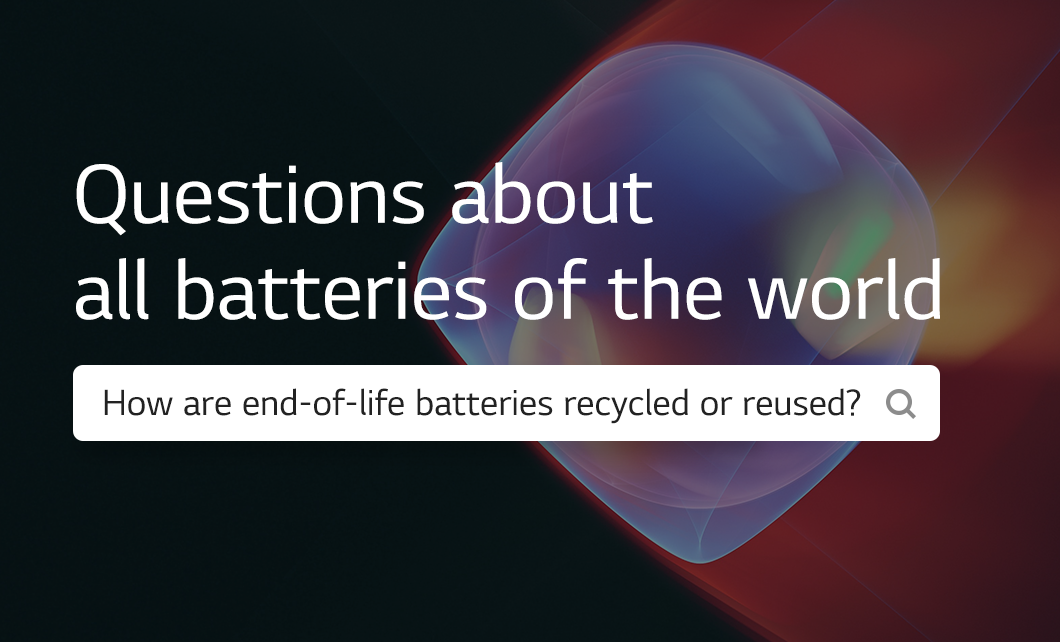
Q. What’s the difference of reusing and recycling end-of-life batteries?
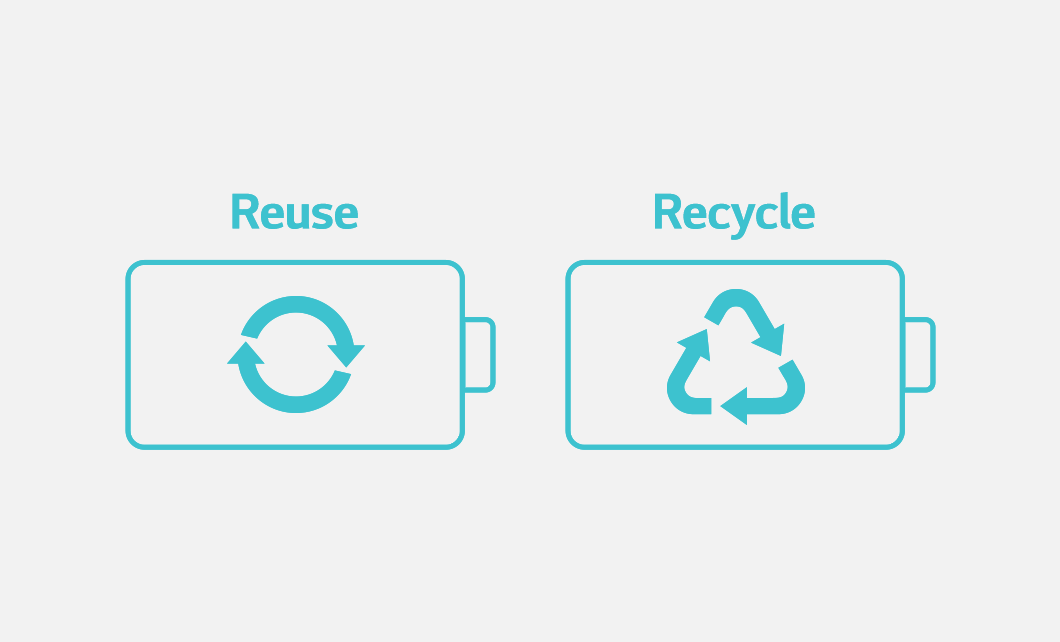
Reusing is the act of gathering end-of-life batteries that have a remaining life and repurposing them for extended use after a series of processes. And recycling is about turning end-of-life batteries that cannot be reused into raw materials to use them for manufacturing batteries.
Q. Why are reusing and recycling end-of-life batteries necessary?
According to a global market research provider*, over 110 GWh of end-of-life batteries is expected to be produced in 2032. The amount is enough to power 11 million battery electric vehicles capable of driving 50 km a day on average. If a virtuous cycle of reusing and recycling end-of-life batteries is created, a considerable amount of energy can be saved. Also, that can produce a positive effect contributing to a decrease in greenhouse gas generation and prevention of resource depletion.
(*Market research provider: BloombergNEF)
Q. How are end-of-life batteries reused?

First, batteries that have reached the end of life and cannot be used for EVs are collected through a pick-up system of each district. The remaining life and conditions (SoH) of the collected batteries are checked to select those that are fit for reuse. Then, a solution is developed to meet the quality and certification regulations of the items the batteries will be repurposed into so that they can secure competitiveness. Lastly, the repurposed batteries are sold and a collection system is designed to encourage recycling them later.
Q. How are end-of-life batteries recycled?
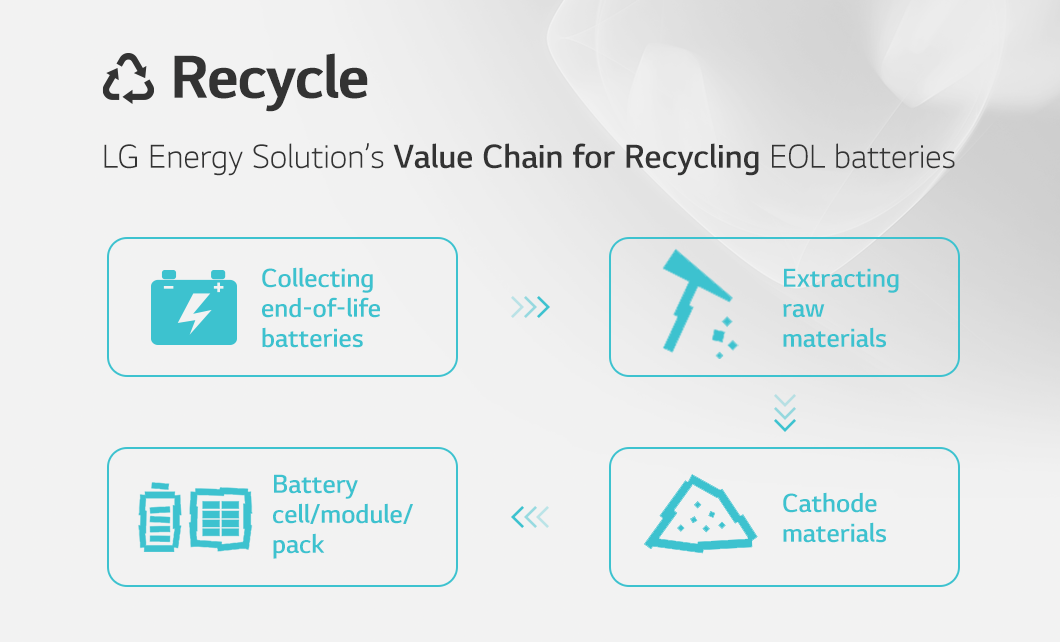
Batteries that cannot be reused go through the processes of disassembling and dissolving to extract raw materials such as cobalt and nickel. The materials are put into the production of cathode materials as the ingredients for making new batteries.
This process can create a circular economy that covers the entire value chain from production, consumption, and disposal of existing materials.
Amid mounting efforts to realize a carbon-neutral society worldwide, the Korean government is also introducing more battery utilization policies. For its part, LG Energy Solution is striving to establish a virtuous circle of resources by strengthening partnerships with companies that recycle end-of-life batteries and by promoting the Battery as a Service (BaaS) project that manages battery’s entire life cycle to create a sustainable future value.
